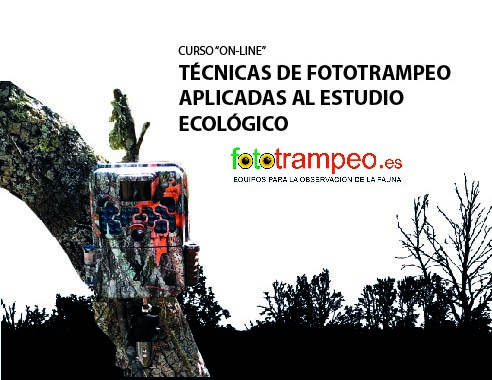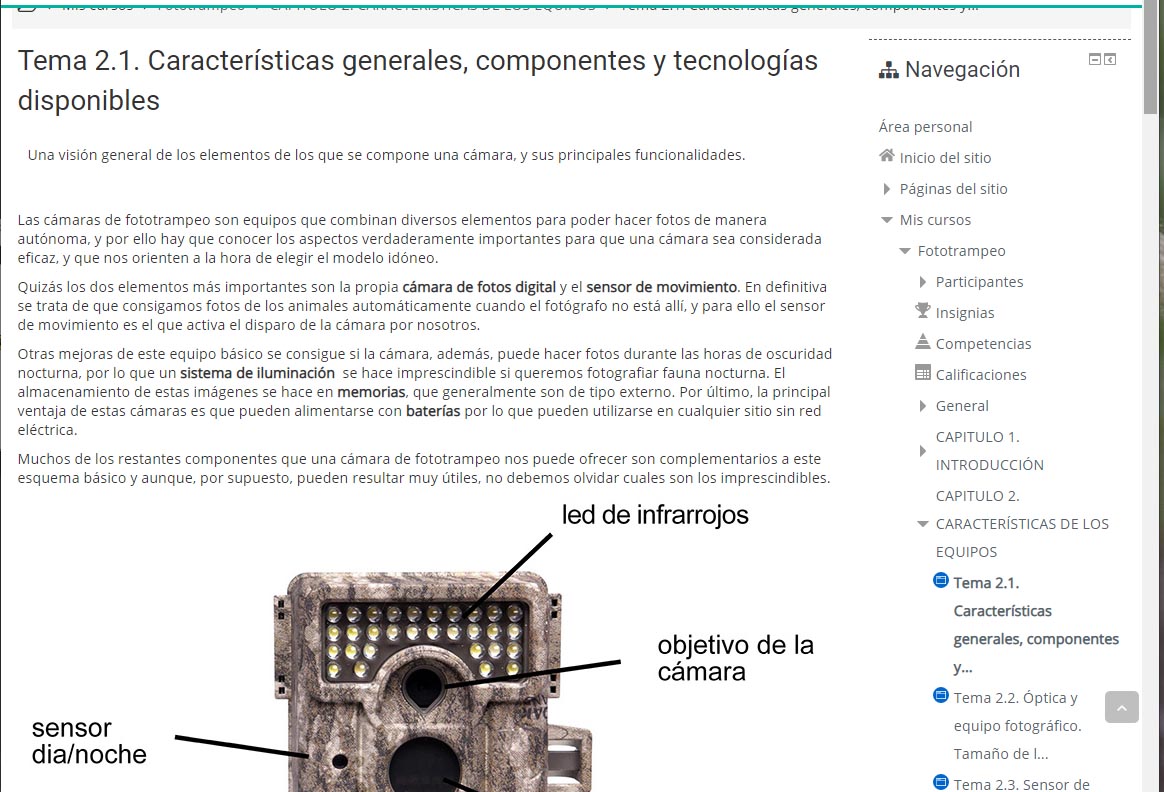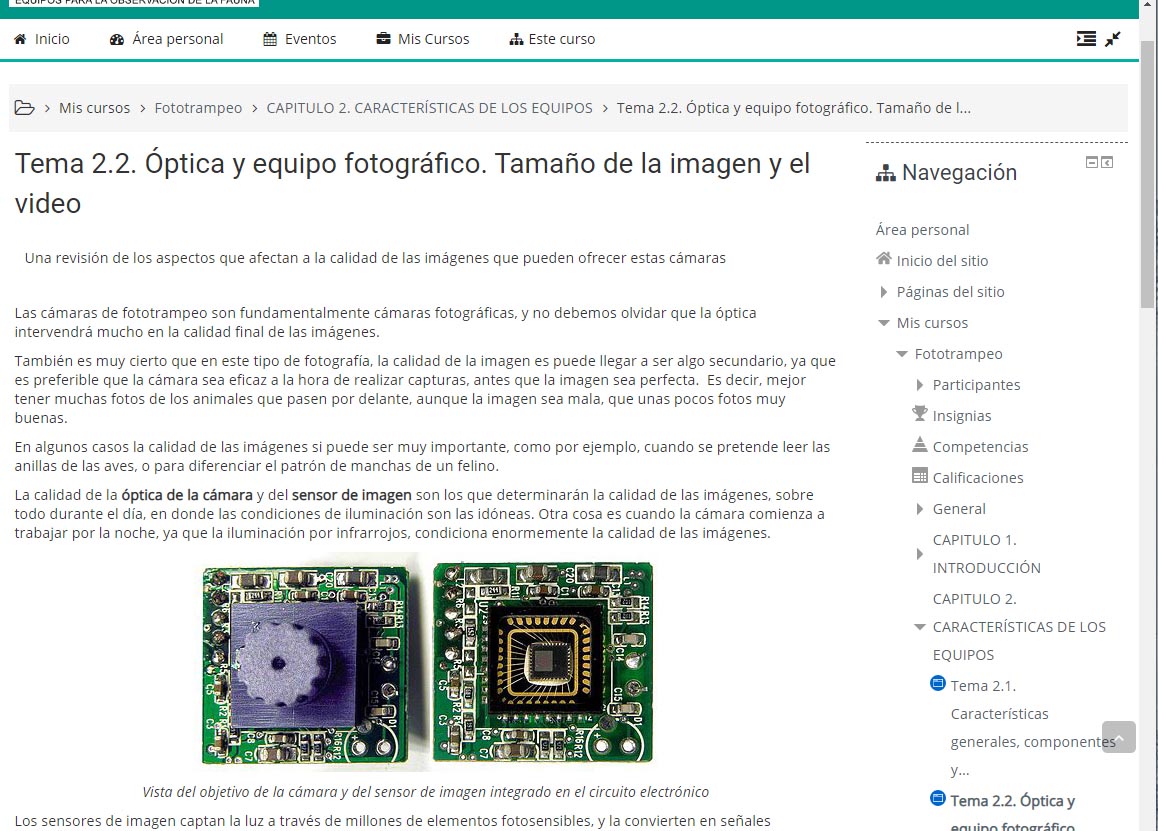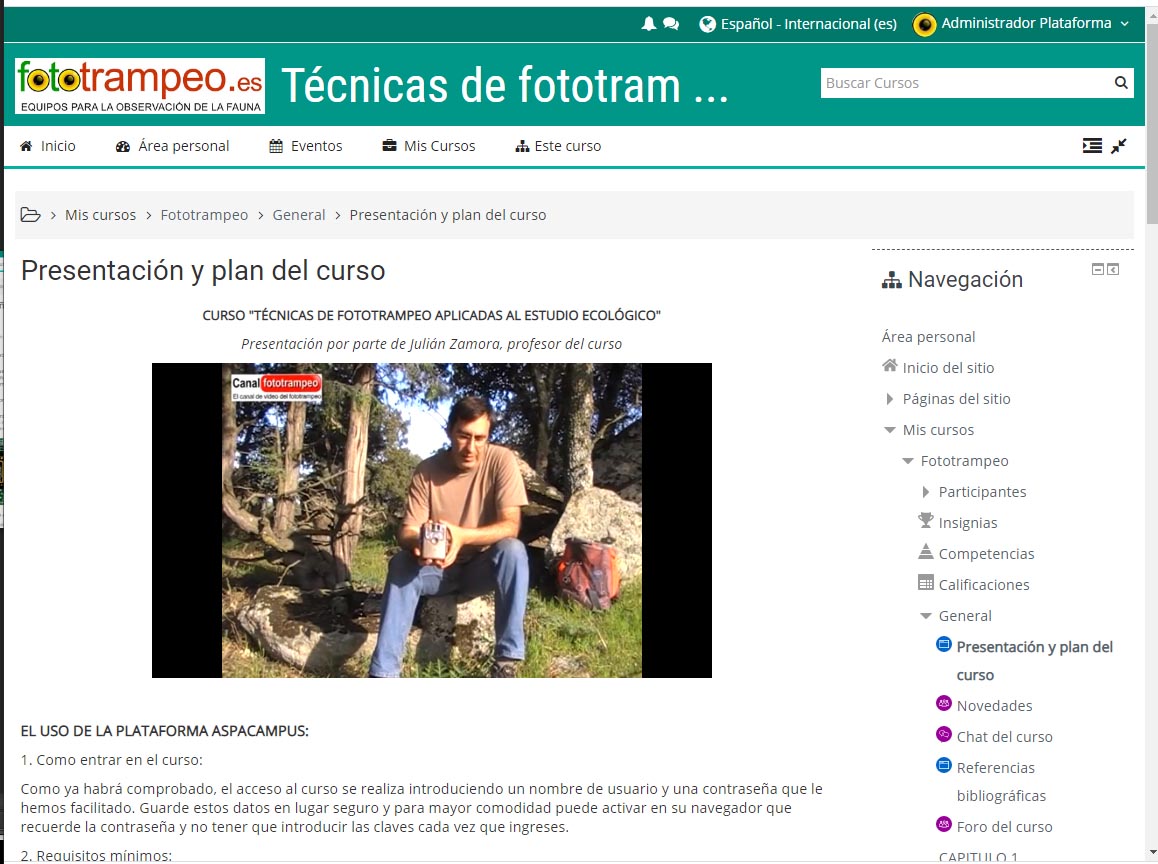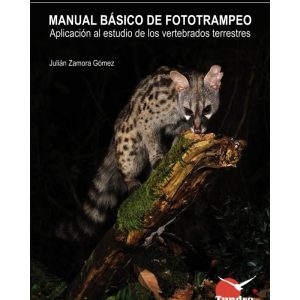Description
Photo-trapping is a technique that uses special cameras that can photograph and record videos of wild animals autonomously without the presence of the observer or researcher. This equipment has been used by researchers in places that are difficult to access, which allows them to obtain images of species that would otherwise be very difficult to observe. Currently this technique is becoming widespread in studies of ecology, wildlife behavior, and a multitude of environmental applications.
The website www.fototrampeo.es has designed and developed the course "Photo-trapping techniques applied to the ecological study", in online format, which allows the student to take this course from anywhere with a wide range of training resources, practices and works.
AIMED AT:
Professionals related to environmental sciences, management of natural areas or wildlife monitoring and tracking who want to increase their skills and theoretical and practical knowledge. Students of scientific-technical careers who are interested in expanding their theoretical and practical training in new technologies applied to research. Anyone interested in nature, which aims to start in this technique with the most advisable theoretical and practical foundations.
OBJECTIVES:
At the end of the course, the student will be able to perform the following tasks and functions:
- To know the main types of photo-trapping equipment available, their capacities and available technologies.
- Identify the different components of photo trapping cameras, motion sensors, optics, infrared and visible illumination, memories, power consumption and power supplies, among others.
- Program the photo trapping cameras according to the different needs required, such as interval time, choice of photo or video, time lapse, sequential shooting, etc.
- Selecting the most suitable places to place them, according to the different scenarios that can be found in the natural environment and with the aim of making them go unnoticed, by means of various concealment and camouflage techniques.
- To design a sampling of faunal populations according to different techniques and methodologies specific to photo-trapping.
- To plan research campaigns in the natural environment, by means of these devices, rationalizing the time, the economic budget and the objectives pursued.
METHODOLOGY:
Este curso se ha diseñado totalmente online, de modo que el alumno puede desarrollar todo el curso desde un ordenador personal que disponga de conexión a Internet. Se dispone de plataforma de formación “online” que cuenta con diversos y atractivos recursos formativos, como lecciones, cuestionarios, consultas a los profesores del curso, talleres prácticos, trabajos, videos explicativos, chat y foros, entre otros.
Advanced computer skills are not essential, but basic knowledge of internet browsing, the use of e-mail and word processing programs are sufficient to carry out the work.
El alumno puede realizar el curso en cualquier momento y horario, ya que los recursos estarán disponibles permanentemente y la relación con el profesorado, tutores y gestores se realizará mediante foros, mensajes o email. Si fuesen necesario programar sesiones virtuales (pej. Zoom) se podrán acordar con el alumno en el horario más conveniente.
AGENDA:
CHAPTER 1: INTRODUCTION. (3 hours)
- How this technique arises.
- Comparison with traditional wildlife tracking systems.
- Applications of this technique and main existing working groups in the world.
CHAPTER 2: CHARACTERISTICS OF THESE EQUIPMENTS. (7 hours)
- Optics and photographic equipment.
- Motion sensor.
- Night lighting.
- Activation speed.
- Storage memory.
- Power supply: batteries.
- Image and video size.
- Other features.
- Review of various models and comparisons.
CHAPTER 3: KEY ASPECTS IN THE CHOICE OF EQUIPMENT. (5 hours)
- The combination of optical, detection and illumination fields.
- Type of capture: Passing, fixed stations, surveillance, etc.
CHAPTER 4: PLACEMENT IN THE FIELD. (10 hours).
- Identification of traces, footprints and other clues.
- The choice of location.
- Preparation of the ground and placement of the chamber.
- The use of baits and attractants.
CHAPTER 5: METHODOLOGIES FOR THE STUDY OF FAUNA THROUGH PHOTOTOGRAPHY (10 hours).
- Ecology basics
- Distribution of vertebrates in space and time.
- Sampling methodologies.
- Presence/absence.
- Indices of relative abundance.
- Abundance estimation by capture/recapture.
- Infrastructure permeability.
- Design of a sampling campaign by photo-trapping.
TEACHING:
The design and organization of the course is in charge of Julián Zamora, zoologist, expert in photo-trapping and founder of the website www.fototrampeo.es. He is the author of the book "Basic manual of photo-trapping. Application to the study of terrestrial vertebrates". Editorial Tundra, 2012 and president of the International Association of Phototrapping (AIF).
DURATION:
The estimated time for the course is 35 hours, over 3 weeks.
TUITION FEES:
The price of the course is 85,00 euros, although discounts are occasionally offered.
REGISTRATION/RESERVATION OF PLACE:
You can register and take this course at any time. From the moment you formalize the payment and after reviewing the registration, our team will provide you by email the username and password to access the training platform.
RIGHTS:
The payment of the registration fee entitles the student to attend the virtual course and, if the student passes the minimum evaluation and attendance requirements, to receive a diploma and certificate of attendance issued by the organization. This certificate, together with the diploma, will be sent to the student by email in pdf format.
FORMS OF PAYMENT:
The registration fee can be paid by bank transfer, Paypal or credit card. At the end of the order process, the web will offer you these three payment methods. The system will automatically provide you with the corresponding invoice.

